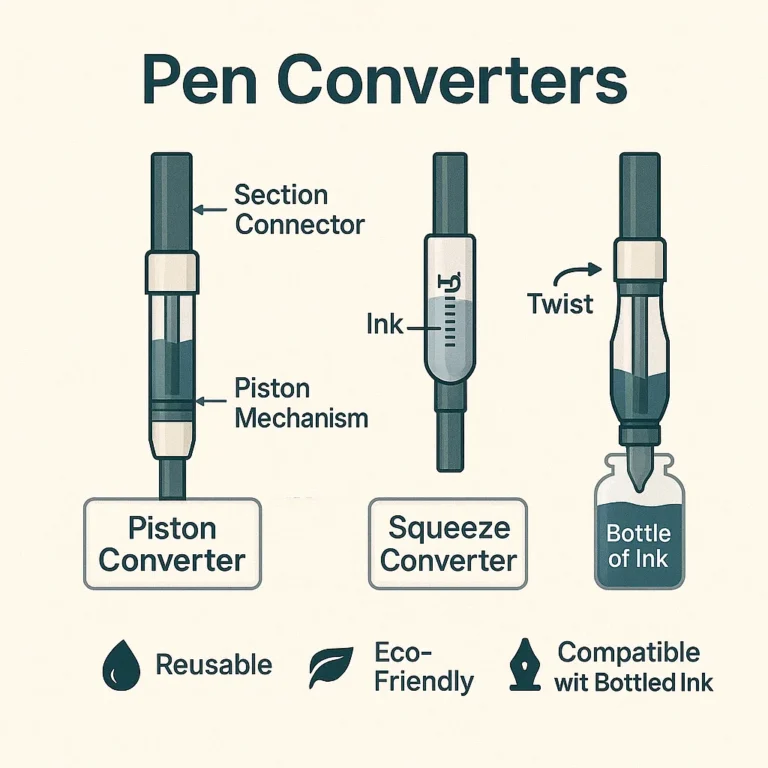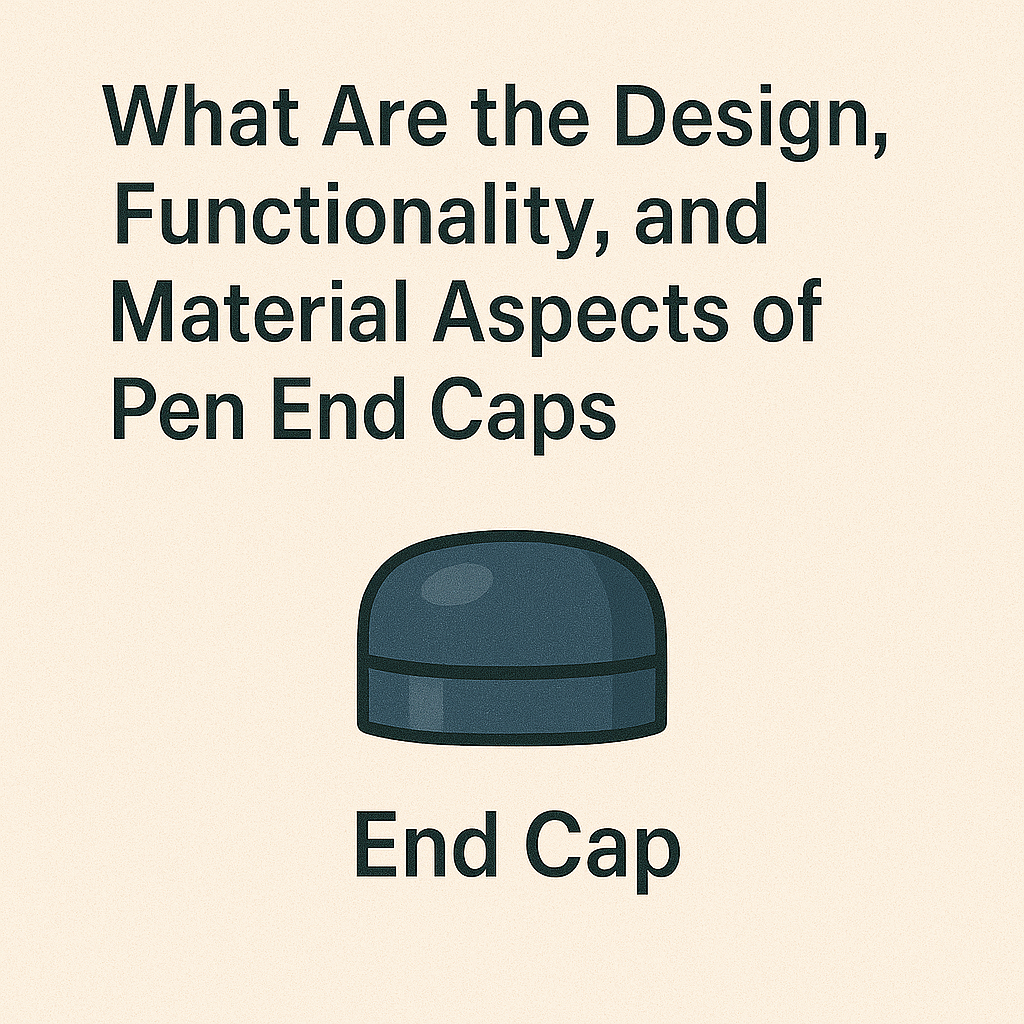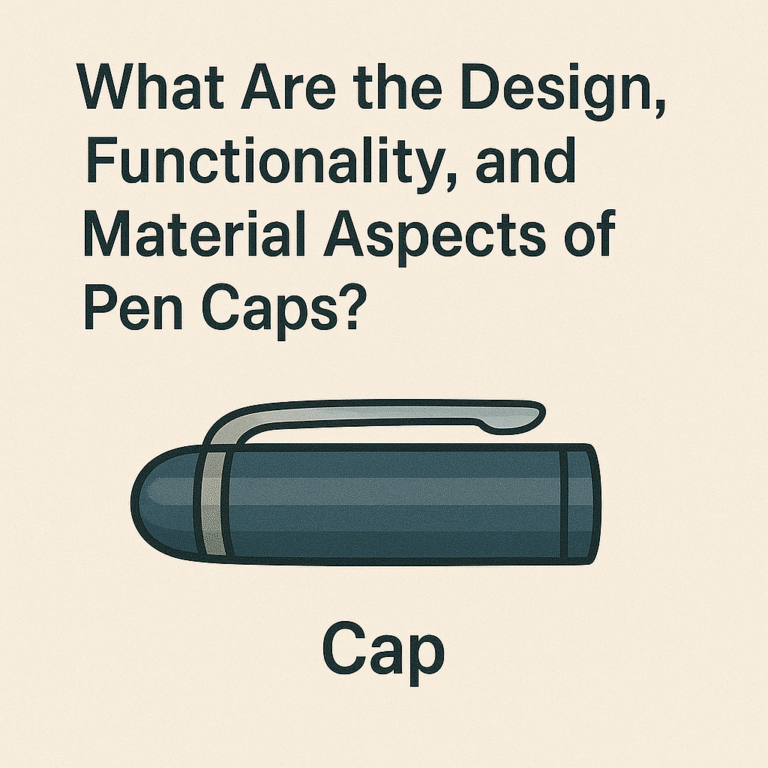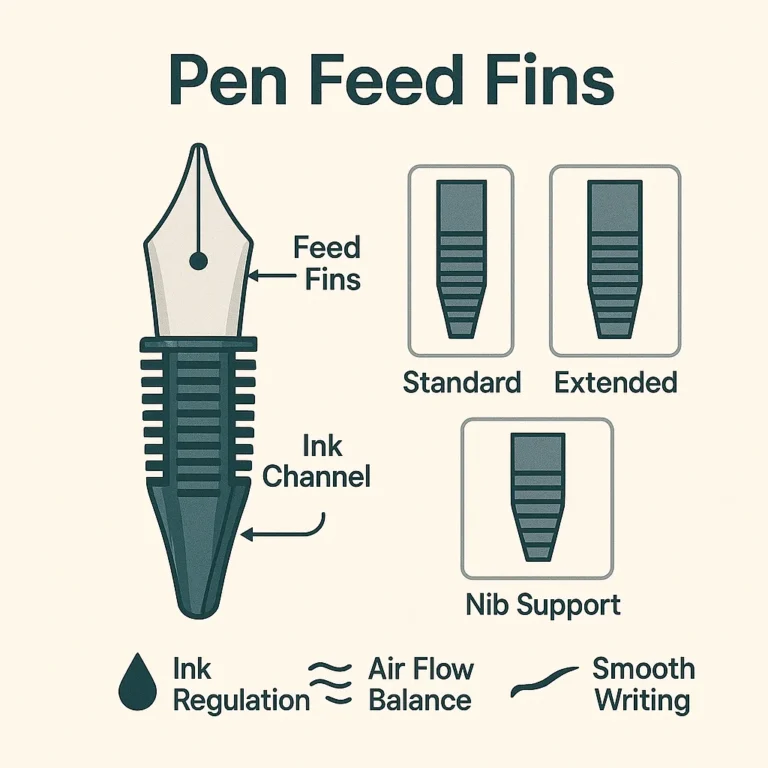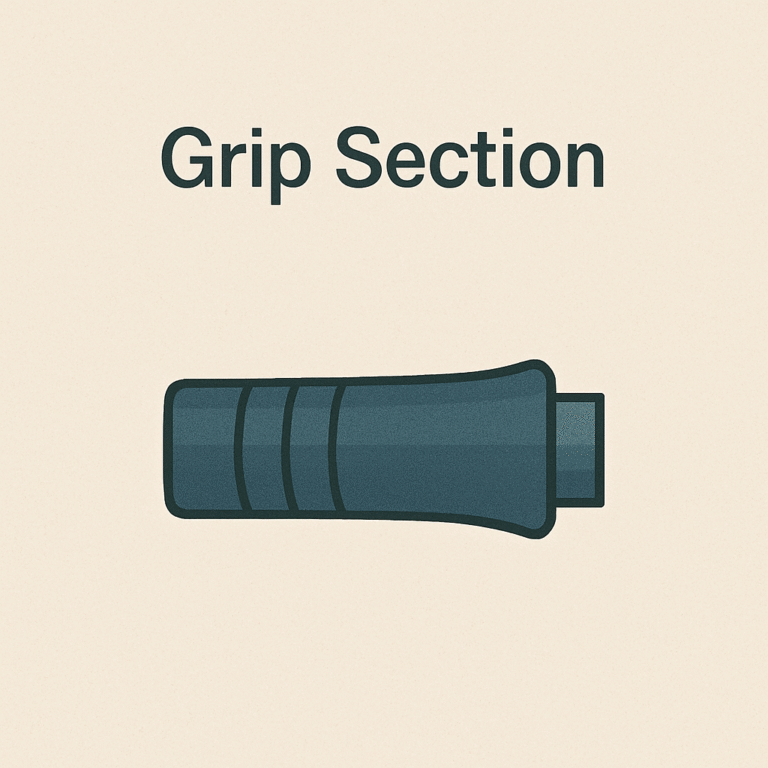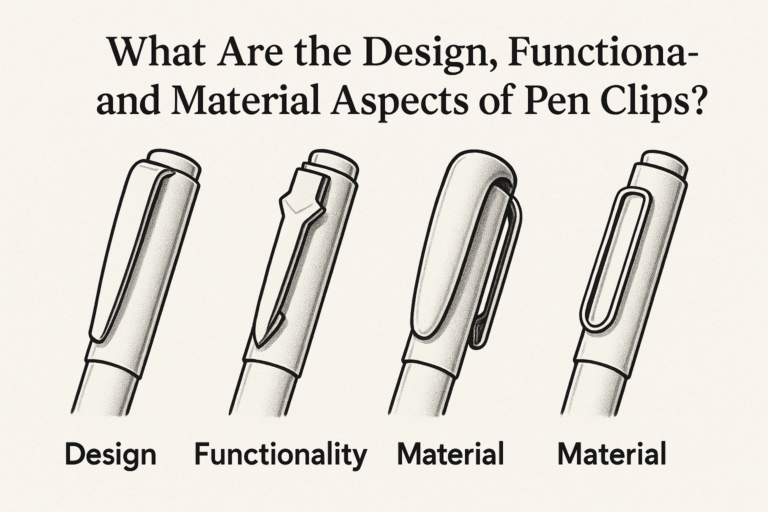What Are the Design, Functionality, and Material Aspects of Pen Barrels?
The pen barrel isn’t just for holding. It’s crucial to understand how ballpoint pens and fountain pens work and feel, especially considering how the main body of the pen goes into the writing experience. The design ensures comfort in your hand, especially when the pen is not in use. The material, like plastic or metal, affects the pen’s weight and performance.
Different styles and substances shape your writing experience deeply.
Pen barrels vary in appearance and substance, directly influencing your writing and the performance of the nib.
Key Takeaways
- Pen barrels vary in shape and material, including plastic, metal, wood, and brass, each affecting how the ballpoint pen works. These differences affect the pen’s feel and ease of writing.
- Ergonomic designs improve grip and balance, lessening hand fatigue for smoother writing over long periods.
- The barrel design influences both the pen’s comfort and its look — choices range from simple colors to elaborate metal finishes, allowing writers to express their personal style while using different pen inks.
- Barrel materials impact the pen’s weight; plastic is lighter for longer use while metal adds stability with a premium appearance, making them common materials used in fountain pens.
- Hybrid barrels combine materials for durability like metal but remain light enough for comfortable extended use.

Design Aspects of Pen Barrels
Pen barrels vary in shape, which can affect the overall aesthetic and functionality of the popular writing instrument. Some are cylindrical, while others are designed to fit comfortably in your hand. Ergonomic designs prevent hand fatigue during long writing sessions and add a stylish look.
Barrels hold essential parts like the ink reservoir or cartridge, crucial for fountain pens and the heart of the fountain pen experience, which is traditionally used for elegant writing. A well-crafted barrel ensures balance and comfort while writing, contributing to the flow of ink from the reservoir to the nib. Textured or curved surfaces improve grip, preventing the pen from slipping, which is crucial for maintaining ink from drying during use; a quality pen often incorporates such features.
Shape and Structure
The shape of the pen barrel impacts how it feels and balances in your hand. This design ensures comfort during both short notes and longer writing tasks. Barrels may include curves or soft spots for finger rest, which helps ease fatigue and protects the ink reservoir inside, ensuring smooth operation.
Materials like plastic or metal make these barrels durable yet lightweight, maintaining balance to prevent hand strain, which is crucial for parts of a fountain pen. Textured surfaces on the barrel enhance grip, reducing slipping for better control while writing on any writing surface, especially at the end of the pen, where the parts of a ballpoint are often located.
Ergonomic Considerations
Ergonomic designs in pens reduce hand fatigue for long writing periods, especially when the fountain pen is made with thoughtful contours. These pens fit better, making writing smoother, especially when the design prioritizes the flow of ink from the reservoir to the writing surface traditionally used in fountain pens. Materials impact pen comfort and the overall feel of the nib. Light materials are easy to hold but may not feel balanced, especially when considering how the pen cap fits with the overall design of a perfect pen.
Heavy materials offer stability but can tire your hand. The goal is to find a balance for ease during extended use, particularly when the pen is made of plastic.
Aesthetic Elements
Pen designs vary greatly to appeal to different tastes, including both disposable options and more traditional models, which can include popular fountain pen styles and innovative ballpoint pens. Brands focus on the appearance of pens, knowing that style can reflect the maker’s identity and attract users, particularly in the competitive market of types of ballpoint pens, where popular fountain pen designs also play a role. From vibrant colors and sleek metal finishes to warm wooden details, these design choices play a key role in how a pen feels in your hand and can make writing a more enjoyable activity.
Functional Aspects of Pen Barrels
The barrel holds the pen’s parts together and protects the ink reservoir. It balances the pen for easier, less tiring writing, especially when the pen goes into action. Barrels with textures or shapes provide a better grip, allowing smooth writing without slipping, which is essential for effective use of the ballpoint tip when the pen is in use, reminiscent of the history of the ballpoint pen.
Barrels vary in weight and size to suit your writing style, influencing how the ballpoint pen works for different users. Light rollerball pens are good for quick notes, while heavier ones, often made from gold, offer steady writing. The barrel’s material affects its weight and balance, which is vital in determining the overall feel of a quality pen.
Next, we discuss different materials used in making pen barrels and their impact on your writing instrument, including common materials like plastic and metal, as well as how the pen is made can influence overall performance.
Structural Support
Pen barrels provide structural support, crucial for ballpoint pens and fountain pens, ensuring the proper function of each part of the pen is made possible. They protect the ink reservoir inside, ensuring smooth writing, particularly when using ballpoint ink. Barrels shield inner parts like ink cartridges from leaks or damage, especially when the fountain pen is made with quality materials.
This protection maintains a pen’s balance, making it comfortable to use without causing fatigue.
Weight Distribution
A well-designed pen barrel ensures balance, making writing effortless and preventing hand fatigue. The right pen that suits your hand feels comfortable, allowing for extended use without discomfort.
The material of the pen—be it plastic, metal, or wood—influences its weight and how balanced it appears during writing, particularly when the tip when the pen is in use is considered.
Comfort and grip are essential for correct holding techniques and smooth movement across the page when using pens that offer better ergonomics.
Comfort and Grip
Ergonomic pens help avoid hand tiredness during long writing times, making them a favorite among users of popular writing instruments, particularly when using a converter for ink refills to create a pen that feels comfortable. Their design makes sure you can balance the body of the pen and hold them well, so writing is easier and less tiring, especially when using high-quality materials such as precious metals usually made in premium pens. Pens that have textured or rough barrels don’t slip, giving a firmer grip, which is especially beneficial for expensive pens that require precision.
Different materials change how a pen feels to use. Plastic pens are lightweight and comfortable for long use, making them a common choice for fountain pen enthusiasts. Metal pens are heavier, which helps with grip. Wooden pens are light but get more comfortable to hold over time because of their unique texture.
Each material impacts how well you can grip the barrel of the pen, changing your writing experience and the efficiency of the ballpoint tip.
Material Aspects of Pen Barrels
Pen barrels affect the feel, weight, and durability of writing instruments, especially those made of plastic used in ballpoint pens. Plastic barrels are lightweight and affordable, suitable for everyday use, making them a common material choice for many fountain pen enthusiasts, which are often made of black materials. Metal barrels add a premium look and feel, plus they’re more durable than plastic.
Wooden barrels offer a classic appearance and warm touch. Hybrid barrels combine metal and plastic to balance style and weight, often incorporating various raw materials.
Plastic Barrels
Plastic barrels are popular with pen makers because they are lightweight and affordable. These barrels help balance the pen, making it easy to hold and use for long periods, especially when the fountain pen is made with ergonomic considerations. They ensure the ink cartridge and other inner parts function properly, including the tip of the pen onto which the ink flows.
The shape of plastic barrels fits our hands well, preventing fatigue during writing, making them an essential part of the pen. Textured surfaces on some pens improve grip, leading to steadier writing, particularly when understanding the anatomy of the pen. Injection molding allows for these ergonomic designs at low costs, while also providing options for colorful and distinctive looks that reflect brand identities.
Metal Barrels
Metal barrels make pens feel high-end and durable, aligning with the expectations of consumers seeking expensive pens that are usually made by reputable pen companies and often attached to the cap for convenience. They also help with steady writing because of their weight, contributing to a smoother writing experience. These pens are designed for comfort and have a timeless style, making them ideal for branding, especially when considering the types of ballpoint pens available.
Metal parts in pens ensure they can handle daily use without showing wear. They allow for a comfortable grip during long writing sessions and add a professional look to any setting.
Wooden Barrels
Wood pen barrels give a classic look, often preferred by those who appreciate the craftsmanship of a quality pen. They feel warm and comfortable to hold, making writing better, akin to how bic cristal pens enhance the writing experience. These barrels need more care but improve the writing experience. Each wooden part makes the pen unique, connecting writers to their tool, much like the history of the ballpoint pen connects us to its evolution.
Hybrid Barrels
Hybrid barrels use metal and plastic for strength and lightness. Metal adds durability, while plastic makes the pen comfortable to hold. This combination improves the pen’s balance, making writing easier and reducing hand fatigue.
Ink flows smoothly in these pens, suitable for ink cartridges or ballpoint mechanisms, which is essential for making ballpoint pens that perform reliably, especially for fountain pen enthusiasts. Hybrid barrels combine functionality with a sleek design.
Conclusion
Pen barrels are important in writing tools. They vary in shape, material, and design, with ballpoint pens using different types of ink delivery systems, which are often made of plastic. Each type changes the pen’s feel and function, influencing how the writer interacts with the writing surface, especially when considering how ballpoint pens include different points of the pen. For example, plastic barrels are lightweight, but metal ones offer a solid grip, making them popular choices among users of bic pens, particularly when paired with a tungsten carbide ball in fountain pen nibs.
Ergonomic designs keep your hand comfortable, ensuring that the pen was first created with user comfort in mind. A well-balanced barrel of the pen improves writing ease and control, especially when understanding the anatomy of the pen. Choosing the right pen involves examining its barrel for comfort and style considerations.
FAQs
1. What is a pen barrel and what’s its function in writing instruments?
The pen barrel, an important part of the anatomy of pens like ballpoint, rollerball or fountain pens, houses the ink reservoir or cartridge, which can be replaced with a converter in fountain pens that give the pen enhanced versatility. It’s crucial for functionality as it holds the ink that enables us to write.
2. How does the design of a pen barrel affect writing?
Design aspects such as capillary action and thrust device mechanisms can influence how smoothly ink flows from the reservoir through to the tip of your writing instrument, affecting overall writing quality.
3. What materials are used in making pen barrels?
Pen barrels are often made using methods like injection molding or extruding with materials such as alloys for corrosion resistance, which is crucial in the durability of the ball of the ballpoint pen. Tungsten carbide might be used in the nib due to its durability.
4. Are there different types of pen barrels for different kinds of pens?
Yes! For example, a ball-and-socket mechanism is typical in ballpoint pens while fountain pens use capillary action within their barrels to control ink flow, demonstrating the different ways pen parts function.
5. How does mechanical engineering play into creating pen barrels?
Mechanical engineering techniques like die casting help shape liquid alloys into sturdy yet lightweight pen barrels suitable for everyday use, ensuring that the pen was first designed for optimal performance.
6. Can novelty items also have functional pen barrels?
Absolutely! Novelty items like flashlight-pens or syringe-shaped novelty pens contain fully functioning miniaturized versions of traditional parts including ink cartridges housed within their unique ‘pen’ barrels.
